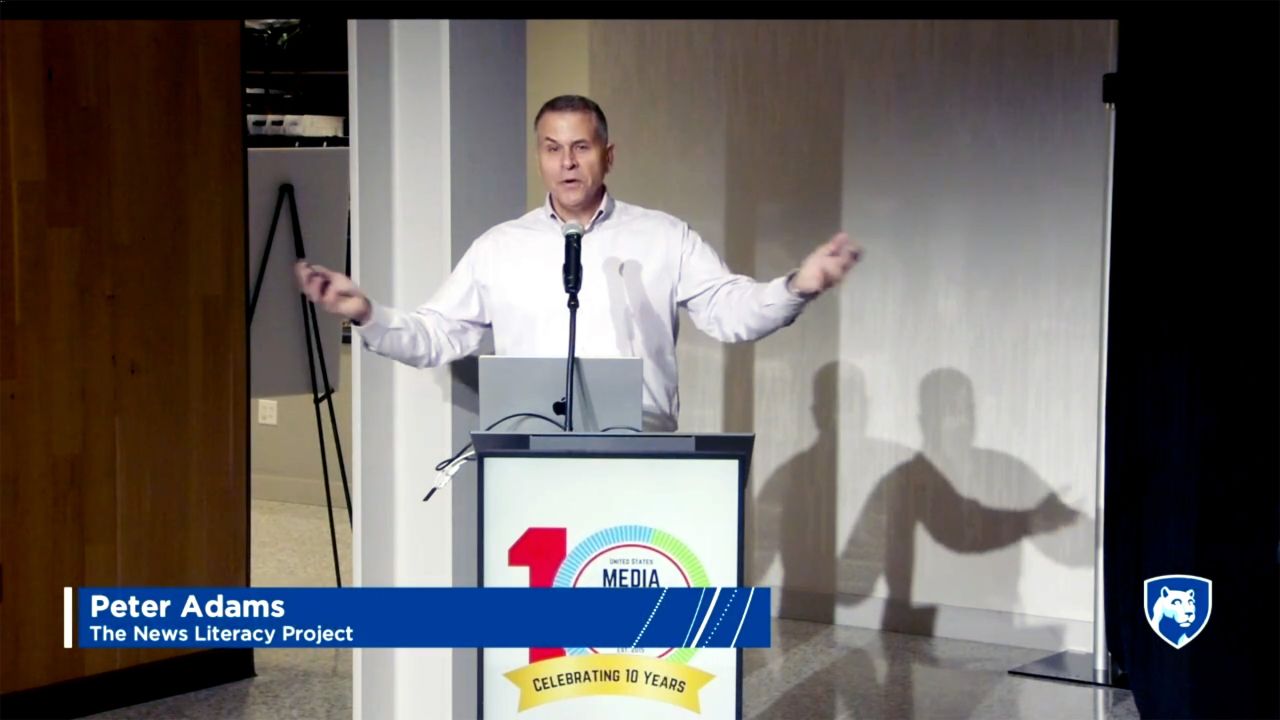December 06, 2024
“Prebunking Election Misinformation: Analyzing Patterns in Viral Falsehoods about the 2024 President Race”

Session two drilled down on mis- and disinformation related to the 2024 election cycle. Peter Adams, senior vice president of research and design for the News Literacy Project, presented cases from the group’s interactive fact-checking database, RumorGuard. The database evaluates viral election rumors, typically from social media, on five factors: authenticity, source, evidence, context, and reasoning. Adams presented multiple examples of A.I.-manipulated false information and noted that, while this type of content has not played a significant role in this year’s election cycle, its influence will likely grow in subsequent years.
Another big takeaway from Adams’ talk was the emergence of “prebunking,” or teaching people how to recognize misinformation before they encounter it. A hot topic among researchers and the subject of mainstream news coverage, prebunking aims to “immunize” or inoculate the public from false claims and manipulated content. Adams presented two ways we can prebunk: “claim specific,” or explaining how one piece of misinformation is wrong, and “pattern oriented,” or emphasizing the broader patterns visible in hyper-partisan statements.
Adams also presented findings from a recent News Literacy Project survey of more than 1,000 American teens. The most notable discovery: 94% of respondents believe that media literacy education should be part of the secondary curriculum.
